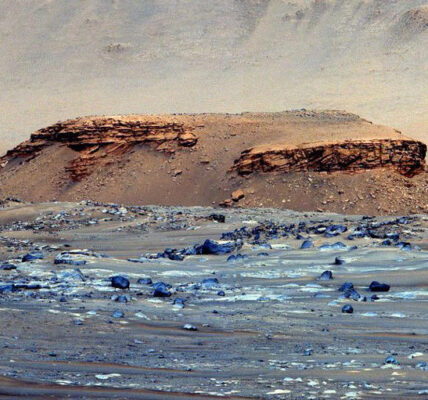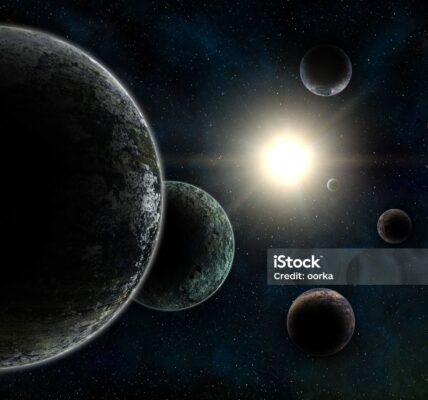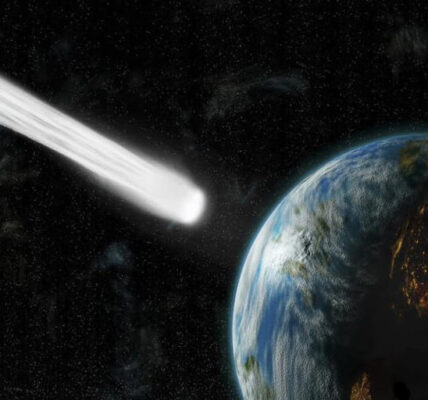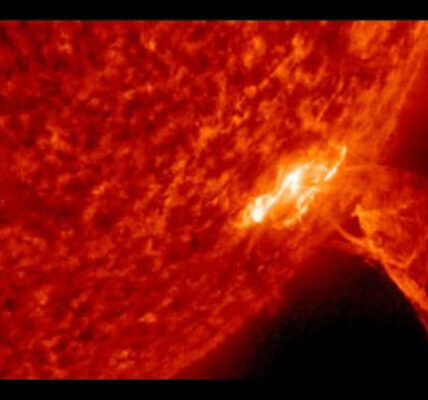NASA Lunar South Pole Mission 2027 marks another significant step in lunar exploration, with Intuitive Machines leading the charge to deliver crucial scientific instruments to the moon’s south pole. Discover how this mission will enhance our understanding of the lunar environment and support future space exploration.
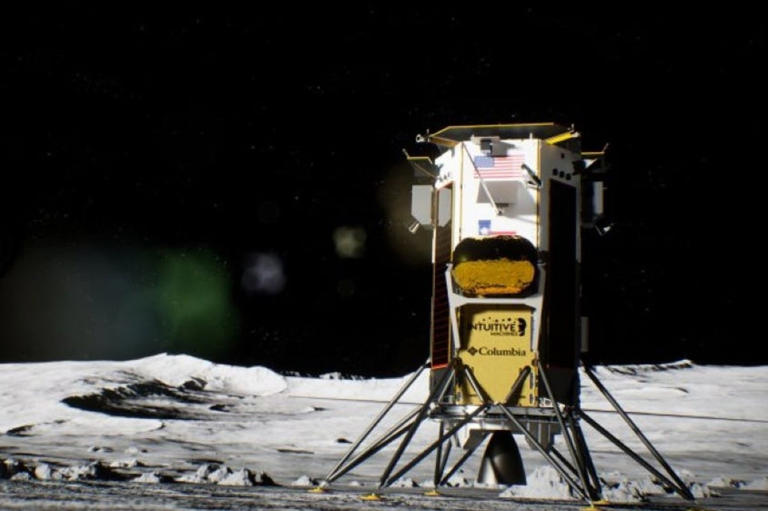
© Provided by Space
NASA Lunar South Pole Mission 2027: A New Era of Lunar Exploration
NASA has taken a significant leap forward with its upcoming NASA Lunar South Pole Mission 2027. This mission, awarded to Intuitive Machines with a contract worth $116.9 million, is set to play a crucial role in expanding our understanding of the moon’s south pole. Intuitive Machines, a Houston-based company that has already made history by successfully executing the first private lunar landing, will once again journey to Earth’s closest neighbor. This time, the mission is not just about landing on the moon but about gathering valuable scientific data that will help pave the way for future lunar and Martian exploration.
The Significance of the NASA Lunar South Pole Mission 2027
The NASA Lunar South Pole Mission 2027 is part of NASA’s broader strategy to explore the moon in unprecedented detail, particularly its south pole. This region of the moon has captured the interest of scientists worldwide because of its unique characteristics and potential resources, such as water ice, that could be crucial for future human missions. By sending a suite of advanced scientific instruments to the lunar surface, NASA aims to answer critical questions about the moon’s environment and lay the groundwork for future exploration efforts, including the highly anticipated Artemis program.
Intuitive Machines: Leading the Charge
Intuitive Machines has quickly emerged as a key player in the new era of lunar exploration. The company’s first lunar lander, a solar-powered craft named Odysseus, made history by successfully landing near the moon’s south pole in February 2024. The mission, although short-lived, operated for seven Earth days—its expected duration—and demonstrated the company’s capability to execute complex lunar missions.
Building on this success, Intuitive Machines is preparing for its second mission, IM-2, set to launch later this year on a SpaceX Falcon 9 rocket. This mission will also target the lunar south polar region and carry a NASA payload called PRIME-1 (Polar Resources Ice Mining Experiment-1). PRIME-1 is designed to search for water ice, believed to be abundant in this area, which could be a critical resource for sustaining future human presence on the moon.
NASA Lunar South Pole Mission 2027: The Fourth Lunar Effort
The NASA Lunar South Pole Mission 2027 will be Intuitive Machines’ fourth mission to the moon. This mission, supported by NASA’s Commercial Lunar Payload Services (CLPS) program, underscores the company’s growing role in lunar exploration. CLPS is an initiative aimed at gathering extensive data about the moon ahead of the planned arrival of astronauts later this decade under NASA’s Artemis program.
The CLPS program is essential for building a robust scientific foundation for future lunar missions. By sending scientific instruments to the moon aboard commercial landers like those from Intuitive Machines, NASA can accelerate the pace of discovery and reduce the time between mission planning and execution. The NASA Lunar South Pole Mission 2027 is a perfect example of this strategy in action.
Scientific Instruments on the NASA Lunar South Pole Mission 2027
The NASA Lunar South Pole Mission 2027 will carry six scientific instruments that will collectively weigh about 174 pounds (79 kilograms). These instruments are designed to conduct a range of experiments that will enhance our understanding of the lunar environment, particularly in the south polar region. Here’s a closer look at these instruments and their objectives:
Lunar Explorer Instrument for Space Biology Applications
This instrument will deliver yeast to the lunar surface to study its response to the moon’s unique conditions, including radiation and gravity. Managed by NASA’s Ames Research Center in Silicon Valley, California, this experiment will provide valuable insights into how biological organisms respond to the harsh environment on the moon. The findings could inform future missions that involve longer-term human presence on the lunar surface.
Led by the European Space Agency (ESA), this suite of instruments will drill up to 3.3 feet (1 meter) beneath the lunar surface. The goal is to extract samples and analyze them in-situ in a miniaturized laboratory to identify potential volatiles, such as water, ice, or gas, that may be trapped in the moon’s extremely cold subsurface. The data collected by PROSPECT will be crucial for understanding the distribution of resources on the moon, which could support future exploration and even in-situ resource utilization.
Laser Retroreflector Array
This passive optical instrument is a collection of eight retroreflectors that will enable precise distance measurements between a spacecraft and the reflector on the lunar lander. Managed by NASA’s Goddard Space Flight Center in Greenbelt, Maryland, the array will function as a permanent location marker on the moon, providing a reliable reference point for decades to come. This instrument will also help improve the accuracy of future lunar missions.
Surface Exosphere Alterations by Landers (SEAL)
The SEAL experiment will investigate the chemical response of lunar regolith to the disturbances caused by a spacecraft landing. It will also evaluate how contaminants injected into the regolith by the lander might alter the composition of samples collected nearby. Managed by NASA Goddard, this experiment will provide insights into how landings might affect the lunar environment, which is critical for planning future missions that involve sample collection.
Fluxgate Magnetometer
The Fluxgate Magnetometer, also managed by NASA Goddard, will characterize certain magnetic fields on the lunar surface. By improving our understanding of energy and particle pathways, this instrument will contribute to our knowledge of the moon’s magnetic environment, which could have implications for both lunar and Martian exploration.
Lunar Compact Infrared Imaging System
This instrument, managed by the Laboratory for Atmospheric and Space Physics at the University of Colorado at Boulder, will deploy a radiometer to explore the moon’s surface composition. The system will also map the surface temperature distribution and demonstrate the feasibility of using infrared imaging for future lunar resource utilization activities. The data collected by this instrument will be essential for planning future missions that involve resource extraction on the moon.
Looking Ahead: The Future of Lunar Exploration
The NASA Lunar South Pole Mission 2027 is not just another lunar mission—it represents a critical step forward in our quest to understand the moon and prepare for future human exploration. By sending these advanced scientific instruments to the moon’s south pole, NASA and Intuitive Machines are laying the groundwork for future missions that could unlock the mysteries of the lunar environment and help us achieve our long-term goals in space exploration.
As we look to the future, the data gathered by the NASA Lunar South Pole Mission 2027 will inform the development of technologies and strategies for sustaining human presence on the moon and eventually on Mars. With each mission, we move closer to realizing the dream of a permanent human presence in space, and the NASA Lunar South Pole Mission 2027 is a crucial part of that journey.
The NASA Lunar South Pole Mission 2027 is set to be a milestone in space exploration, building on the successes of previous missions and pushing the boundaries of what we know about the moon. As Intuitive Machines and NASA prepare for this groundbreaking mission, the world will be watching, eager to see what new discoveries await us on the moon’s surface.
Related:
Human-Caused Meteor Showers: 5 Amazing Breakthroughs You Need to See!
